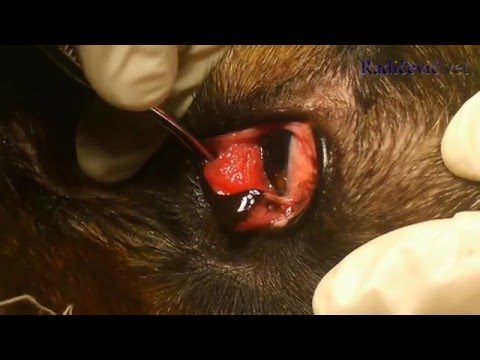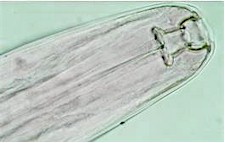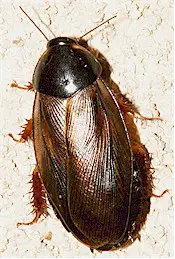Oxyspirura mansoni


-Kathy[/I][/B][/COLOR][/I][/B]
that infects the eyes of poultry (chickens, turkeys, pigeons, guinea fowls, ducks, pheasants, quails, etc.) and numerous wild birds. It is closely related to the genus Thelazia, the eyeworms of mammals.[/B][/I][/COLOR][/B][/I][/COLOR]
There are about 20 species worldwide, all on birds. The most relevant species for poultry are:
It is mot very frequent, but can be a problem in birds reared on soil under traditional farming conditions: in endemic regions up to 50% of birds in a farm may be infected.
- Oxyspirura mansoni, also called Manson's eyeworm or thetropical fowl worm (= Oxyspirura parvorum, Filaria mansoni, Spiroptera mansoni, Yorkeispirura mansoni, Microfilaria seguini). It s found mainly in tropical and subtropical regions of America, Asiaand the Pacific.
- Oxyspirura petrowi is found mainly in grouse and pheasants in America, Europe and Asia.
These worms do not affect dogs, cats, cattle sheep, goats, horses or swine.
The disease caused by Oxyspirura worms is called oxyspiruriasis or oxypirurosis.
Are birds infected with Oxyspirura worms contagious for humans?
You can find additional information in this site on the general biology of parasitic worms and/or roundworms.
- NO: The reason is that these worms are not human parasites.
Final location of Oxyspirura worms
Predilection sites of Oxyspirura worms are the eyes and associated organs: nictitating membrane, conjunctival sacs and nasolacrimal ducts
Anatomy of Oxyspirura worms
Adult Oxyspirura worms are up to 20 mm long, have a whitish color, whereby males are shorter than females. As in other roundworms, the body of these worms is covered with a cuticle, which is flexible but rather tough. They have a tubular digestive system with two openings, the mouth and the anus. The mouth of the females has a characteristic ring with teeth and papillae. The worms also have a nervous system but no excretory organs and no circulatorysystem, i.e. neither a heart nor blood vessels. The female ovaries are large and the uteri end in an opening called the vulva. Each male has a bursa with two uneven spicules for attaching to the female during copulation.
The eggs are ovoid, measure ~45x60 micrometers and are embryonated when shed with the feces.
Life cycle of Oxyspirura worms
Oxyspirura worms have an indirect life cycle. Intermediate hosts are cockroaches (e.g. Pycnoscelus surinamensis, the Surinam cockroach, forOxyspirura mansoni).
Adult female worms deposit eggs in their predilection sites around the eyes. These eggs are passed in the tears through the lacrimal duct to the amouth, are swallowed and shed with the feces. Cockroaches ingest these eggs that release the larvae after digestion. About 8 days later these larvae penetrate the gut's wall, get into the haemocoel (the body cavity of insects) and become encysted, mainly in the fat bodies but also in other tissues. Development to infective L3 larvae is completed about 50 days after ingestion by the cockroaches.
Birds become infected when eating contaminated cockroaches. After digestion infective larvae are released in the bird's gut. They migrate along the esophagus the pharynx and the mouth to the lacrimal duct and the eyes. This migration is very fast: 20 minutes after ingestion of the contaminated cockroaches worm larvae were already found in the lacrimal ducts. Once there, they complete development to adult worms and start producing eggs.
The prepatent period (time between infection and first eggs shed) is 4 to 5 weeks.
Harm caused by Oxyspirura worms, symptoms and diagnosis
Oxyspirura infections are not very frequent in poultry operations and usually the affect single animals, not whole flocks. However, in endemic regions with abundant intermediate hosts many birds in a flock can be affected.
Infections are often benign, but severe infections cannot be excluded. In these cases, the eyes are severely inflamed and watery, and the birds are restless and scratch the eyes continuously. The nictitating membrane may be swollen and moves constantly. The eyelids may be stuck together with a sticky material under the eyelids. Conjunctivitis, excessive lacrimation and photophobia have also reported as well. Infections with secondary bacteria can also occur. In severe cases the birds become blind and the eyes may be destroyed.
Diagnosis is based on clincial signs and detection of adult worms under the nictitating membrane or the conjunctival sac. Eggs can also be detected in the droppings after fecal examination.
Prevention and control of Oxyspirura infections
In endemic regions it is highly recommended to keep the birds' bedding as dry as possible and to frequently change it, because survival of the worms' eggs needs humidity. Since cockroaches transmitthese worms, effective cockroach control should help diminish the risk that the birds become infected. Insecticides can be helpful for this purpose, but only those products that are approved for use on poultry facilities should be used.
Very few anthelmintic, if at all, are approved for use against these worms. The reason is that these worms are quite unusual and therefore not attractive for manufacturers: developing a label claim would be too costly. There are reports that levamisole, either after oral administration or as eye drops, and ivermectin as eye drops effectively control infections with adult worms.
So far no vaccine is available against Oxyspirura worms. To learn more about vaccines against parasites of livestock and pets click here.
Biological control of Oxyspirura worms (i.e. using its natural enemies) is so far not feasible.
You may be interested in an article in this site on medicinal plants against external and internal parasites.
Resistance of Oxyspirura worms to anthelmintics
There are so far a no reports on confirmed resistance of Oxyspirura worms to anthelmintics.
This means that if an anthelmintic fails to achieve the expected efficacy against Oxyspirura worms it is most likely that either the product was unsuited for the control of these worms, or it was used incorrectly.


-Kathy[/I][/B][/COLOR][/I][/B]




